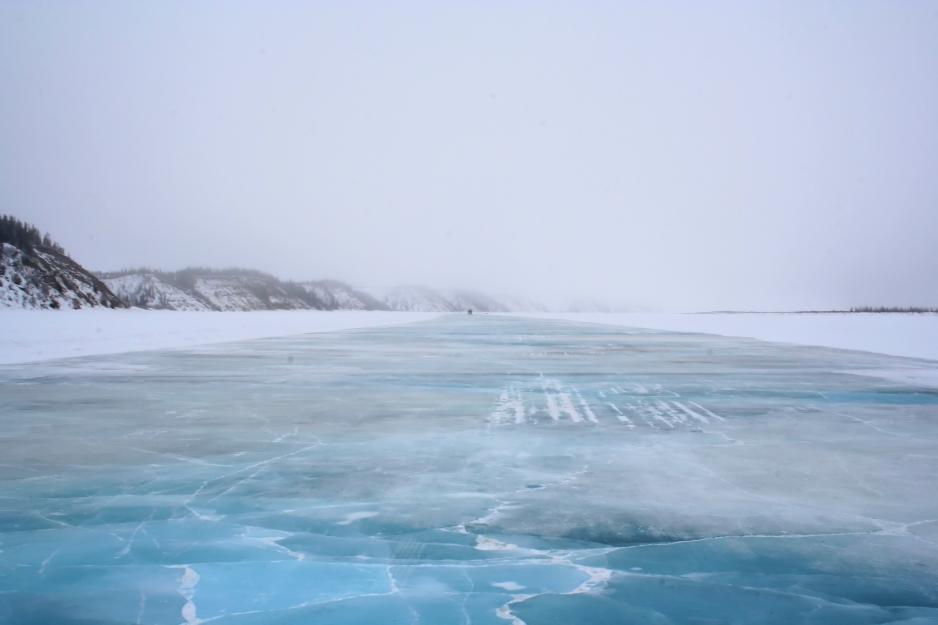Canada’s Road to the Arctic Ocean

The Inuvik-Tuktoyaktuk Highway will create an all year road for Canadians to access the Arctic Ocean for the first time.
Canada has never had an all weather road to its Arctic Ocean. Historically, the only way of reaching communities that are in the northernmost reaches of the country was by plane, boat or ice road in the winter. This is about to change. Today, the Inuvik-Tuktoyaktuk Highway (a 137 km stretch of road) will open, connecting Inuvik (population 3,200) and Tuktoyaktuk (population 900).
Conversations about the feasibility of this road have been ongoing for many years with construction on the road started in 2014.
Many in the North are excited about the opportunities that this packed- gravel road will bring, not only for tourism, but also allowing those living in Tuktoyaktuk, but is the cost of the road worth it?
The Winding Road
Conversations regarding this specific highway started more than 50 years ago in the 1960s. Originally the road was planned to help with the exploration of oil and gas in the region, but with moratorium on the extraction of these resources in the Arctic, many are wondering what the benefits of this road will be for Canada.
According to the Government of the Northwest Territories (GNWT) the road will help bring tourism into the region, "tourism is projected to increase by $2.7 million annually, creating 22 full-time equivalent jobs in the NWT." Furthermore, "residents of Tuktoyaktuk will benefit from a reduced cost of living (approximately $1.5 million in savings), as goods will be able to be shipped year-round." Lastly, according to the GNWT, the road will create 40 long-term jobs in the north and 9 long-term jobs in other parts of Canada.
However, with a price tag at almost $300 million, with almost $200 million coming from the federal government, the question remains, is such a road worth the cost? It would also be remiss not to note the non-financial benefits from the road, including increased access to healthcare and education for those living in Tuktoyaktuk and strengthening the region's ability to be seen as a business hub, and of course the national building aspect of Canada having a road to its northernmost ocean. It seems that many of the benefits are long-term and non-monetary and therefore the question might remain open for the coming years.
The Opening
The highway will open today with much ceremony and pomp. This includes a full day celebration with an inaugural drive. According to an official press release from the Canadian government, the people who are attending this event include Her Excellency the Right Honourable Julie Payette, Governor General of Canada; the Honourable Amarjeet Sohi, Minister of Infrastructure and Communities; the Honourable Carolyn Bennett, Minister of Crown-Indigenous Relations and Northern Affairs; the Honourable Robert R. McLeod, Premier of the Northwest Territories; and the Honourable Wally Schumann, Minister of Infrastructure.
Although the road will not officially open until 1pm with an inaugural drive, My Yellowknife Now, has reported that southbound traffic (from Tuktoyuktuk to Inuvik) will be allowed starting at 6am, allowing residents first access to the new road. The speed limit will be set at 70km per hour.
The Future
The road, which already has a high price tag, will continue to cost money. It will take approximately $1.5 million a year to maintain. This is in large part due to the shifting land under the road. The road is built on permafrost, which means in the summer, much of the terrain thaws, and every winter it will freeze again.The maintenance costs will also including continual clearing snow, which is sure to be needed on this northern road, and other regular road maintenance.
Business is already growing in the small community due to the road. According to one CBC article, a sit down restaurant is already opened in Tuktoyaktuk to accommodate the new road and whoever takes it north. This will be the first time the community has a sit-down restaurant since 2007, when the last one closed down. Gary Reidford, one of the owner’s said, "I was just seeing an opportunity with the road coming, I just thought it would be great to do this." This road may indeed be the start of budding business in this small town and potentially the region.
